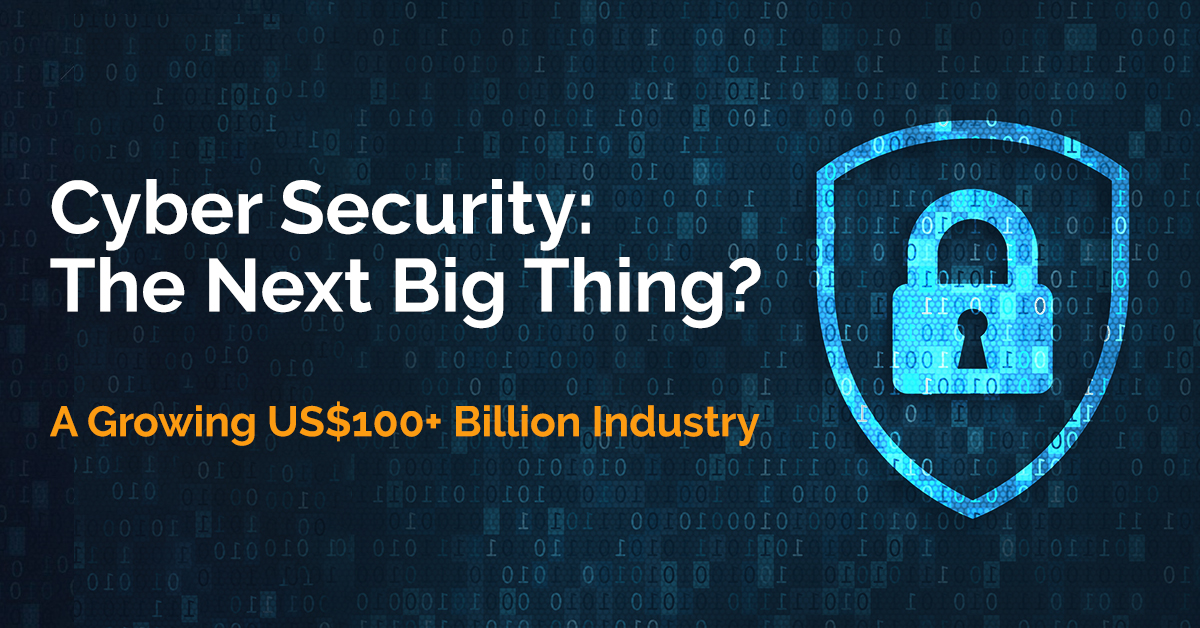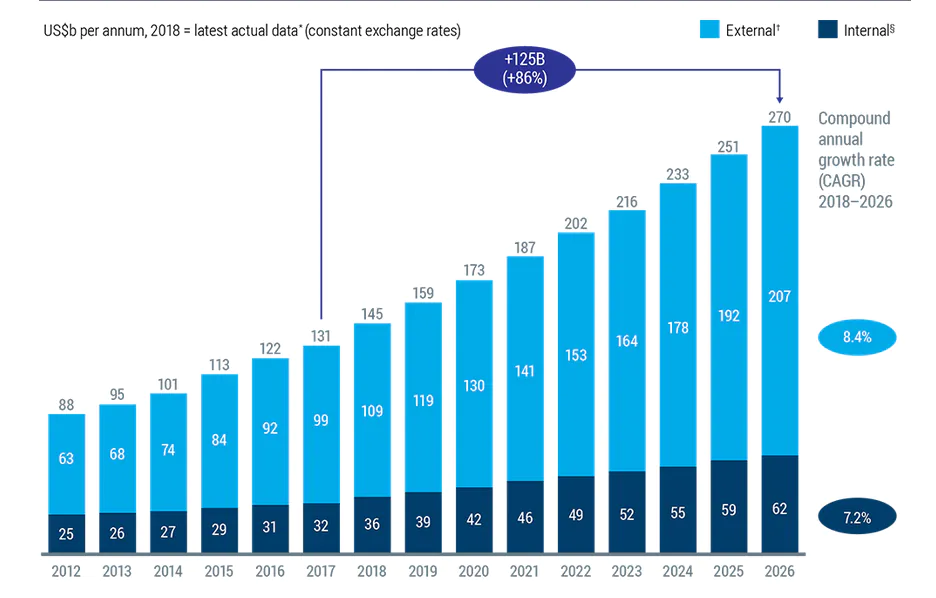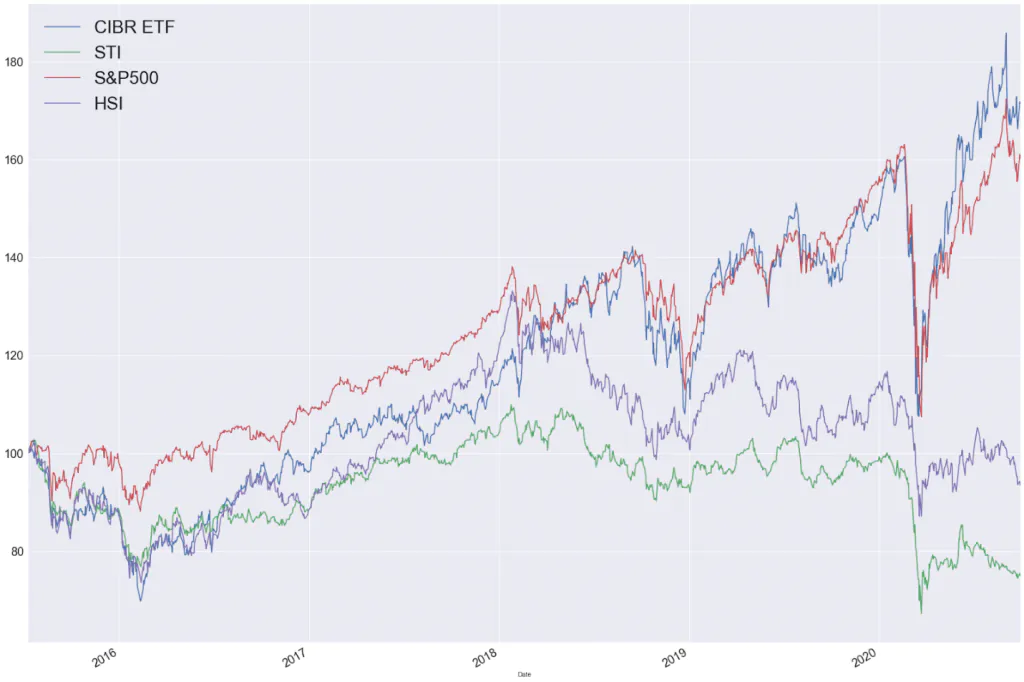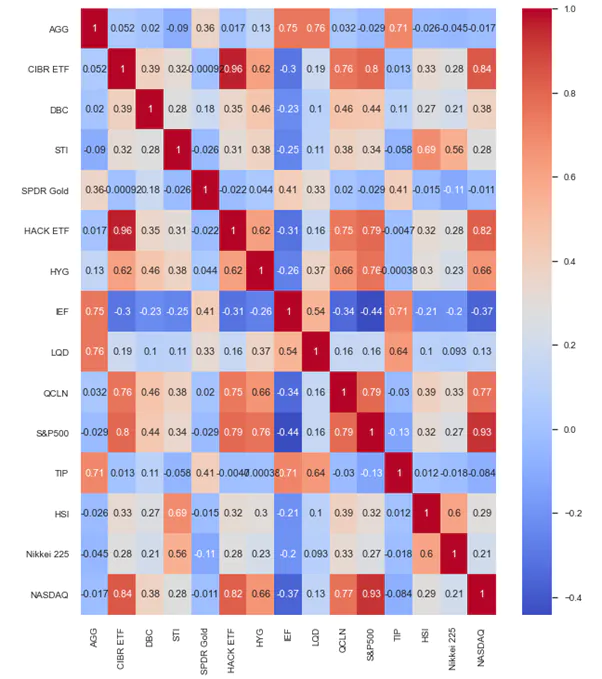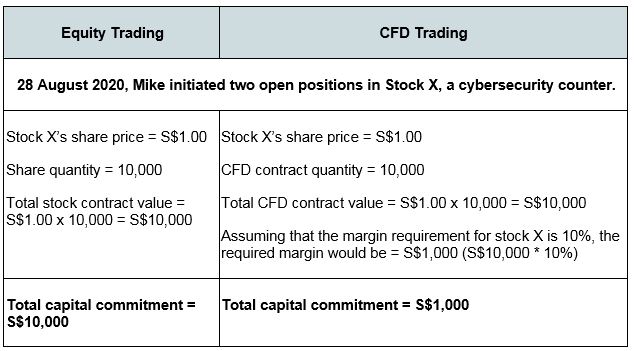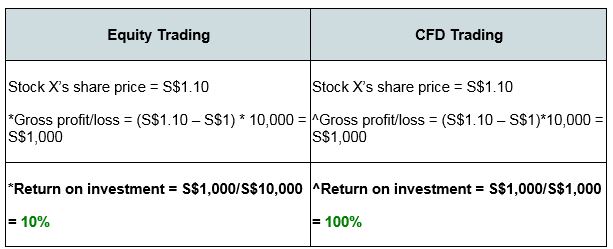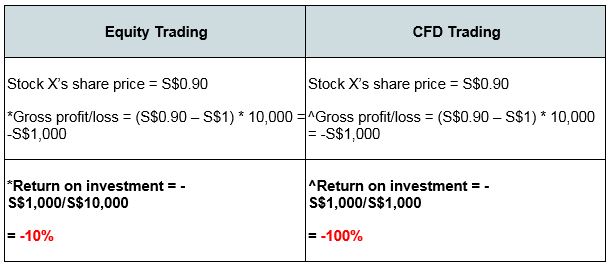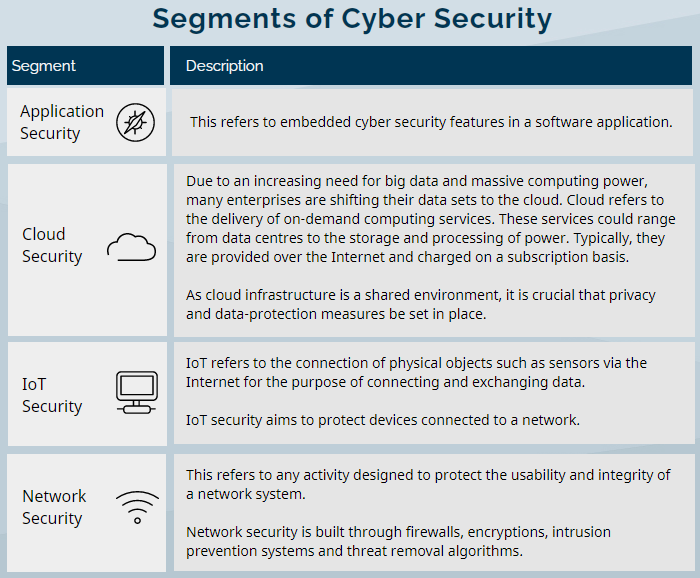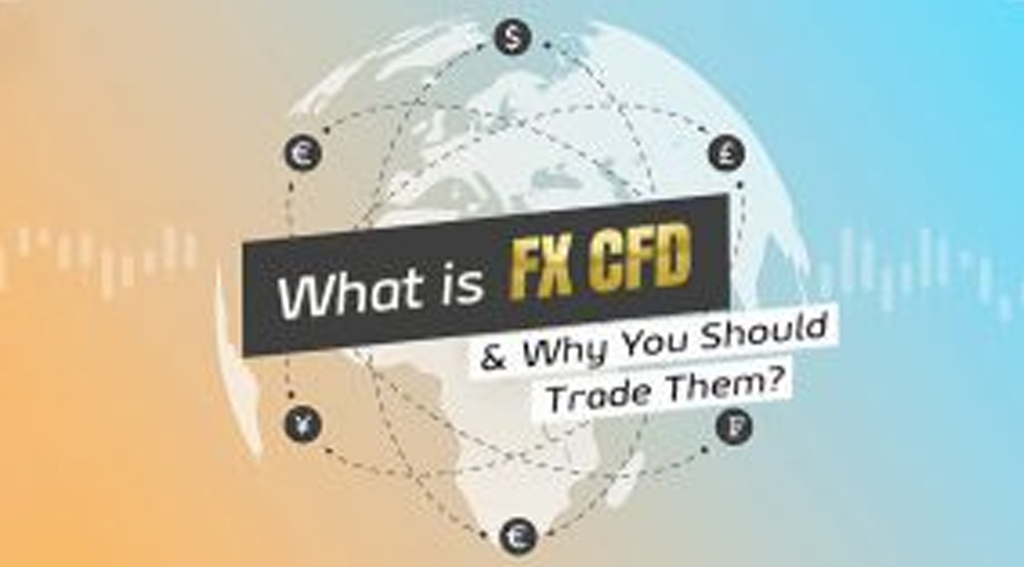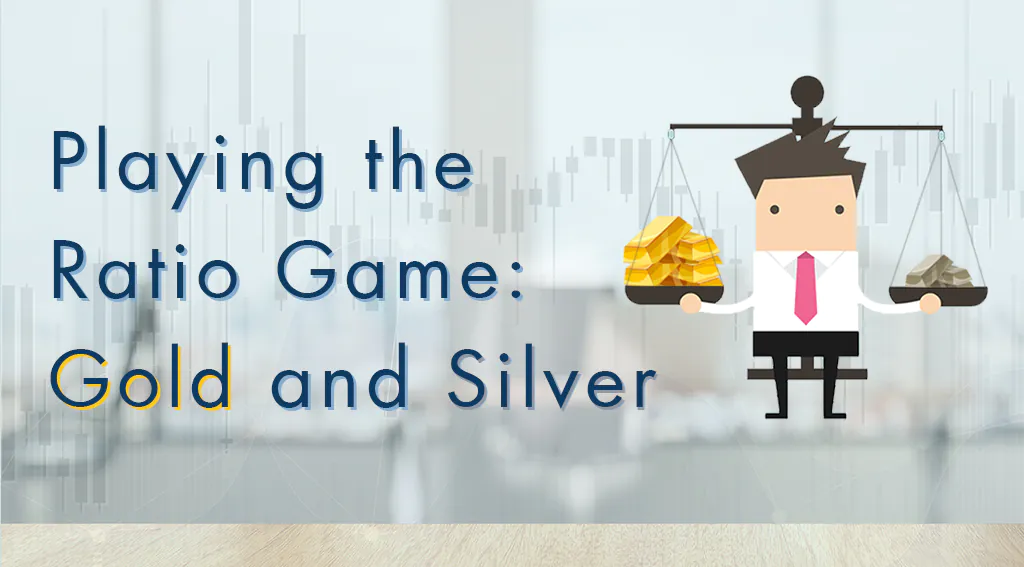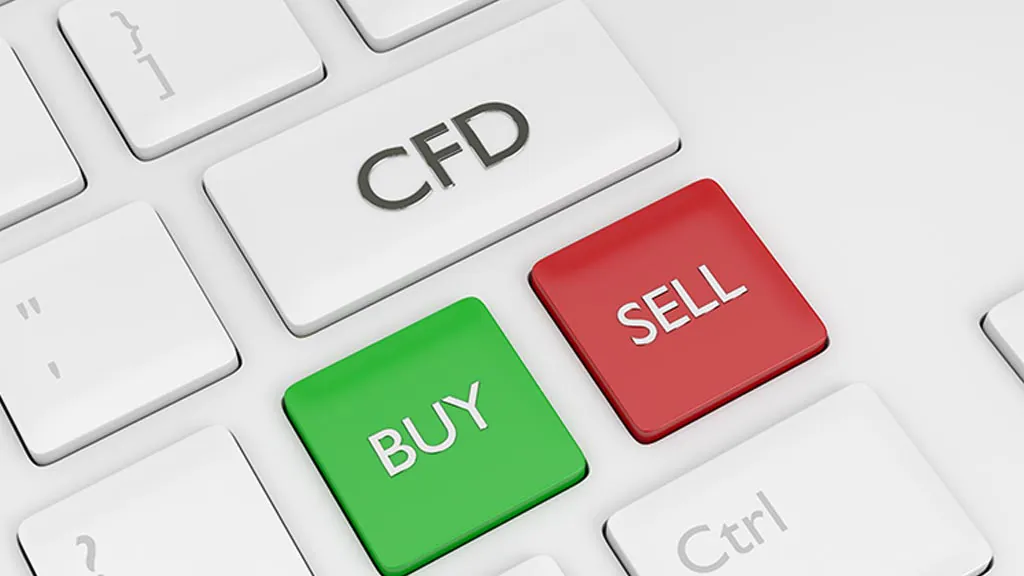Cyber Security: The Next Big Thing?
What this report is about:
- Cyber security is a US$100bn industry – and growing, in no small part due to COVID-19
- Gain exposure to this exciting new industry via ETFs and CFDs
- Correlation matrix below showcases the correlations of popular cyber security ETFs – HACK and CIBR – with other asset classes.
- You can also use the growth equation below as a first-principle guideline to sift out high-quality growth stocks [1]
“Those who cannot adjust to change will be swept aside by it. Those who recognize change and react accordingly will benefit.”
Jim Rogers, co-founder of the Quantum Fund and Soros Fund Management
COVID-19 has radically changed our lifestyles and what we define as normal. Facebook is allowing employees to work from home permanently. The founder of Twitter and Square Inc, Jack Dorsey, has also allowed his employees to work from home indefinitely.[2] Work-from-home arrangements have recast the spotlight on the importance of cyber security.
Since the COVID-19 outbreak, the number of cyber attacks has, not surprisingly, soared. Hackers have exploited weakly-protected back doors in companies’ IT systems during the distractions caused by the pandemic. The FBI now receives 3,000-4,000 cyber security complaints daily, up from 1,000 prior to the pandemic. Global banks have been fending off nearly 3x more phishing emails since COVID-19 [3]. According to Verizon’s Mobile Security Index 2019, 67% of enterprises are least confident of their mobile device security [4].
Sign up for our mailing list now! Get notified with the latest articles, free webinars and more.
Industry Growth
Why couldn’t the police nab the cyber-criminals? Because they ran-som-ware!
The global cyber security market is estimated at US$173bn in 2020. It is expected to grow to US$270bn by 2026.
Figure 1[5]
Source: Gartner; Australian Bureau of Statistics; Burning Glass; expert interviews; AlphaBeta and Mckinsey Analysis
Curious to see whether this industry growth translated to growth in returns from financial markets, we plotted the normalised returns of the CIBR ETF (First Trust NASDAQ cybersecurity ETF) alongside those of the S&P 500, Hang Seng Index and FSSTI from July 2015 to September 2020.
CIBR ETF tracks the NASDAQ CTA Cyber Security Index. To qualify for inclusion in the index, a company must be classified as a cyber security firm by the Consumer Technology Association and have a minimum market capitalisation of US$250mn. CIBR ETF’s most notable holdings include Cisco Systems (CSCO), Accenture Plc (ACN), Zscaler (ZS), Crowdstrike Holdings (CRWD), Akamai Technologies (AKAM), Splunk (SPLK) and Broadcom Inc (AVGO).
Source: Yahoo Finance
As shown in Figure 2, the CIBR ETF outperformed the S&P 500 from July 2015 to September 2020.
How To Gain Exposure
Myriad financial instruments – stocks, CFDs, ETFs – offer investors exposure to the cyber security industry.
Cannot decide which counter to invest in? Worried that your investment may turn out to be another Enron?
Why not gain diversified exposure through ETFs?
Diversification via indexing is an ideal strategy for investors who lack the time and expertise to pick stocks individually. This strategy is also ideal for novice investors. You can gain exposure to the thematic portfolios of your choice via Exchange Traded Funds (ETFs). Check out our POEMS ETF Screener to explore our suite of ETFs.
Picture this: You are a retiree in Singapore. Your portfolio largely consists of Singapore REITS and STI component blue chips. You and your spouse depend on dividends for retirement income. A global pandemic or a black-swan event wreaks havoc on the global economy. How will your lives be affected? It is always important to know how your holding returns correlate with one another.
In portfolio management theory, an investor can reduce his or her overall risks and enhance returns by investing in asset combinations that are independently or negatively correlated.
In Figure 3, we plotted the Pearson Correlation matrix from July 2015 to September 2020 to observe how the returns of the various cyber security ETFs correlate with other asset classes such as precious metals, commodities, bonds and major stock indices. We proxy gold using the SPDR Gold ETF(GLD). For bonds, we use a mixture of high- and low-interest-rate duration bond ETFs. Our bonds include: HYG (iShares iBoxx $ High Yield Corporate Bond ETF), IEF (iShares 7-10 Year Treasury Bond ETF), LQD (iShares iBoxx $ Inv Grade Corporate Bond ETF) and TIP (iShares TIPS Bond ETF). For Commodities, we used the Invesco DB Commodity Index (DBC).
Figure 3: Pearson Correlation matrix, PSR
Due to the number of counters shown, you may wish to save the image and view it in a separate tab.
Based on the correlation matrix, it appears that diversifying via equities alone may not provide ideal portfolio diversification. The lowest correlation to the NASDAQ was the Nikkei 225, with a correlation of 0.21. (The higher the number, the greater the correlation. A correlation of 1 indicates perfect correlation). The highest correlations to the CIBR ETF were the HACK ETF and NASDAQ.
Bonds, gold and DBC (Invesco DB Commodity Index Tracking Fund ETF), on the other hand, provide good diversification from the various equity indices found in the correlation heatmap. This supports the conventional finance theory that bonds and commodities have an inverse relationship with equities. However, do note that the correlations among assets are not static. They change frequently, in accordance with macroeconomic factors such as negative interest rates or changes in index weights.
Trading Contracts for Differences (CFDs)
Contracts for Differences (CFDs) are versatile tools for everyone. They are particularly ideal for people who wish to take a more active approach to investing. CFDs can be used for hedging, short-selling or leveraged trading. They only require a minimum sum upfront, which is known as the margin requirement.
CFDs are also ideal tools for people without much capital outlay but who wish to capitalise on the growth potential of thematic investing.
Example 1 illustrates how CFDs can amplify returns with an initial margin paid upfront.
Example 1
We paint two scenarios for Mike on 29 August 2020.
Scenario A: Stock X’s price has increased by 10%. Mike decides to cash out on his CFD position and use part of his earnings to buy his colleagues drinks on a Friday night!
Scenario B: Stock X’s price decreased by 10%. Mike practises trading discipline by cutting losses on both his positions promptly.
* Calculations omit commissions, clearing fees and other trading fees in share trading. Actual ROIs will be lower than the ROIs calculated.
^ Calculations omit commissions and finance charges for CFD trading. Actual ROIs will be lower than the ROIs calculated.
However, do note that leverage is a double-edged sword.
Although CFDs can magnify your gains through leverage, losses will also be amplified! Therefore, it is always crucial to use leverage responsibly, manage risks effectively and cut losses promptly when you feel that the market is turning against you.
Dissecting the Cyber Security Industry
It is not enough for companies to earn a high un-levered rate of return. Our definition of growth is that they must also be able to reinvest at least a portion of their excess cash flow back into the business to grow while generating a high return on the cash thus reinvested. Over time, this should compound shareholders’ wealth by generating more than a pound of stock market value for each pound reinvested.
Terry Smith; Chief Executive of Fundsmith
The technology sector is known to be notoriously competitive and ever-changing. Therefore, it is important to separate the wheat from the chaff. Below, we provide a framework for you to analyse each stock in the cyber security industry.
While we have dissected the industry into various segments for your easier understanding, do note that many publicly-traded cyber security companies operate a mixture of businesses.
Table 1
When you are selecting the counters to invest in, it is important to know which industry segments they belong to. Break down their revenue and determine the main drivers of their revenue and margins. This should give you an indication of their market shares in each segment and help you determine whether they are market leaders or upstarts. The next step is to understand their returns on invested capital and earnings retention rates.
A company’s growth potential is defined as:
g = ROIC * Earnings Reinvestment Rate
where ROIC = net operating profit after tax / invested capital
In the above formula, a company’s growth potential is a function of its ROIC and earnings reinvestment rate. ROIC reflects management’s capital-allocation ability. For every S$1 invested in the company via debt and/or equity, how much does that translate to additional free cash flows?
Earnings reinvestment rates capture how much earnings a company can and does reinvest in its business. Companies with low earnings reinvestment rates tend to have low cash conversion cycles. They probably need to spend constantly on capital expenditure. It would be ideal to compare their growth equations and valuations with other companies operating in the same space for a better understanding of their business models and fundamentals.
We recommend investors to use the growth equation as a first-principle guideline when analysing growth counters, before moving on to analysing drivers of margins and revenue. We believe this framework will provide investors with a fair understanding of a company’s capital-allocation strategies and economic moats.
US$100bn Industry – And Growing!
Based on current economic and social trends, cyber security looks here to stay. In fact, it will play an increasingly critical role. There are myriad investment instruments available – equities, CFDs, ETFs – that you can use to capitalise on this exciting growth industry. Be sure to check out our other articles and courses on fundamental and technical analysis, thematic investing and how to utilise CFDs. To explore further, email us at cfd@phillip.com.sg or speak to our consultants today.
Sign up for our mailing list now! Get notified with the latest articles, free webinars and more.
References
[1] http://www.comusinvestment.com/blog/growth-returns-on-capital-and-business-valuation
[2] https://www.nytimes.com/2020/05/21/technology/facebook-remote-work-coronavirus.html
[3] https://sloanreview.mit.edu/article/cybersecurity-for-a-remote-workforce/
[4] https://www.forbes.com/sites/louiscolumbus/2019/05/08/how-to-secure-mobile-devices-in-a-zero-trust-world/#40621a594ebe
[5] https://www.austcyber.com/resources/sector-competitiveness-plan/chapter1
More Articles
What is FX CFD & Why You Should Trade Them?
Before you plunge right into Forex (FX) CFD trading, please read this article to understand the basic fundamentals of Forex trading and how you can start trading Forex (FX) CFD with us.
Playing the Ratio Game: Gold and Silver
Gold price has surged to Multi-year high recently, generating massive interest in this investment amidst market uncertainties and low interest rates. Read on to find on about the Gold/Silver Ratio.
Understanding Contracts for Difference (CFD)
“What is CFD?” might be a question that has popped up into the minds of those that just recently got acquainted with the concept of investments.
Disclaimer
This material is provided to you for general information only and does not constitute a recommendation, an offer or solicitation to buy or sell the investment product mentioned. It does not have any regard to your specific investment objectives, financial situation or any of your particular needs. Accordingly, no warranty whatsoever is given and not liability whatsoever is accepted for any loss arising whether directly or indirectly as a result of your acting based on this information.
Investments are subject to investment risks. The risk of loss in leveraged trading can be substantial. You may sustain losses in excess of your initial funds and may be called upon to deposit additional margin funds at short notice. If the required funds are not provided within the prescribed time, your positions may be liquidated. The resulting deficits in your account are subject to penalty charges. The value of investments denominated in foreign currencies may diminish or increase due to changes in the rates of exchange. You should also be aware of the commissions and finance costs involved in trading leveraged products. This product may not be suitable for clients whose investment objective is preservation of capital and/or whose risk tolerance is low. Clients are advised to understand the nature and risks involved in margin trading.
You may wish to obtain advice from a qualified financial adviser, pursuant to a separate engagement, before making a commitment to purchase any of the investment products mentioned herein. In the event that you choose not to obtain advice from a qualified financial adviser, you should assess and consider whether the investment product is suitable for you before proceeding to invest and we do not offer any advice in this regard unless mandated to do so by way of a separate engagement. You are advised to read the trading account Terms & Conditions and Risk Disclosure Statement (available online at www.poems.com.sg) before trading in this product.
Any CFD offered is not approved or endorsed by the issuer or originator of the underlying securities and the issuer or originator is not privy to the CFD contract. This advertisement has not been reviewed by the Monetary Authority of Singapore (MAS).

